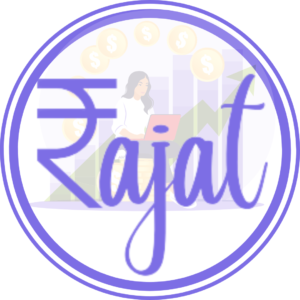

Active Portfolio Management is an approach that aims to outperform a portfolio with broad diversification alone by making advantage of the information at hand and forecasting tools.
Just like every business has one aim is to get sales, similarly every portfolio ‘s aim it to deliver greatest return. Whatever may be the financial product. If you know the difference between active income and passive income then you can easily understand what is the difference between active portfolio management and passive portfolio management.
Active Portfolio Management requires more human input involvement than passive portfolio Management as demand and supply change due to which prices of financial instrument changes which requires more human attention.
Oops! Sorry Here we shouldn’t use the word Humans here, We believe Investors and Fund Managers are perfect phrases that can be used here.
Well, It depends on the market information and useful data. There is a specific and complete procedure to build and operate an active portfolio.
Everyone has their source of information.
First, Raw information is collected by the investor or fund managers. then it gets converted into useful information which can further be used for trading and investing purposes.
Trades take place based on market news, history, and financial statements of a particular company. This portfolio may include a debt instrument, equity instrument, or a mixture of both which we can say is a hybrid model.
The goal of active portfolio management is to outperform the market relative to a chosen benchmark, such as the Standard & Poor’s 500 Index. or we can say that the aim is to beat the returns of Standard & Poor’s 500 Index for the same financial year. These investments are mostly based on sectors or industries not based on any index.
Portfolio managers may decide not to use an active approach that is solely focused on potential changes in interest rates. To account for subpar performance in comparison to a benchmark, they may place an interest-rate wager.
Because investment choices are made considerably more often, this portfolio approach is inherently more dynamic than others. It makes an effort to take advantage of market inefficiencies. Active portfolio techniques cost more money, though.
The degree of liquidity for the assets might raise portfolio expenses through active management. Passive management, in contrast, employs irregular trading patterns to reduce portfolio expenses.
EIC Approach: The present economic cycle is the main topic. Then, managers choose equities in these sectors that are anticipated to do well. With this Management, market analysis is used to determine which industries would do the best. They always first look at the market leader of the particular industry. For Example fund manager is analyzing the Automobile Industry then his first choice would be the equity of Maruti Suzuki as it is the market leader.
Economy ——–> Industry ——–> Company
CIE Approach: This method ignores the state of the market and emerging trends. Managers select stocks based on how well a firm is performing financially. Additionally, they examine plans made by top management then they also check the performance of the peers and competitive companies. They also try to find a bargain deal with the competitor which automatically analyzes the industry and studying the economy is the last step.
Company ——–> Industry ——–> Economy

The use of active management techniques has one significant disadvantage. Active portfolio managers don’t often outperform the market. As a result, a lot of investors favor a straightforward indexing approach.
The majority of investors choose management that enables a portfolio to benefit from the economy’s long-term development.
Since Active portfolio management involves more selling and buying of financial instruments which means you are doing trading not doing investing. The major drawback of trading which Warren Uncle feels that every time you have to give brokerage as fees which are applied on both sides buying and selling.
We hope We gave you some insights about active portfolio management and delivered it in the best possible way.
Let us know what you think about active portfolio management. leave your precious comment, and We will respond to it.
DO SHARE THIS ARTICLE with your friends or family. You can tweet out your thoughts by tagging us @rupayrajat on Twitter. or Instagram
To your Investing Journey
Cheers

Rupay Rajat is a financial and investing blog. I write about financial instruments and the stock market in the most easiest language.
Latest Post

Let’s Unveiling the Power of Compounding in the Stock Market

Mutual fund vs Fixed deposit – Where should you Invest?

How to invest in Mutual Funds? Easy Ways to Invest

What is Mutual Fund? Simple Types of Mutual Fund

29 Best Stock Market Websites (Useful Websites and Apps)

What is the difference between share market and stock market?

How the Stock Market Works in an Unusual Way

What is the Buyback of shares? What happens after Buyback?

What is Bonus Share? How Can I get One?

What is Stock Split? What will happen to shares after that?

What is the Book Value of a share? Valuation Metric of Share

What is the Face Value of the Share? Importance, Example

What are the voting rights of a shareholder? Importance

What is an Adjustable peg? Effect of Forex Market

What is Adhoc Margin? Who Collects from Whom?